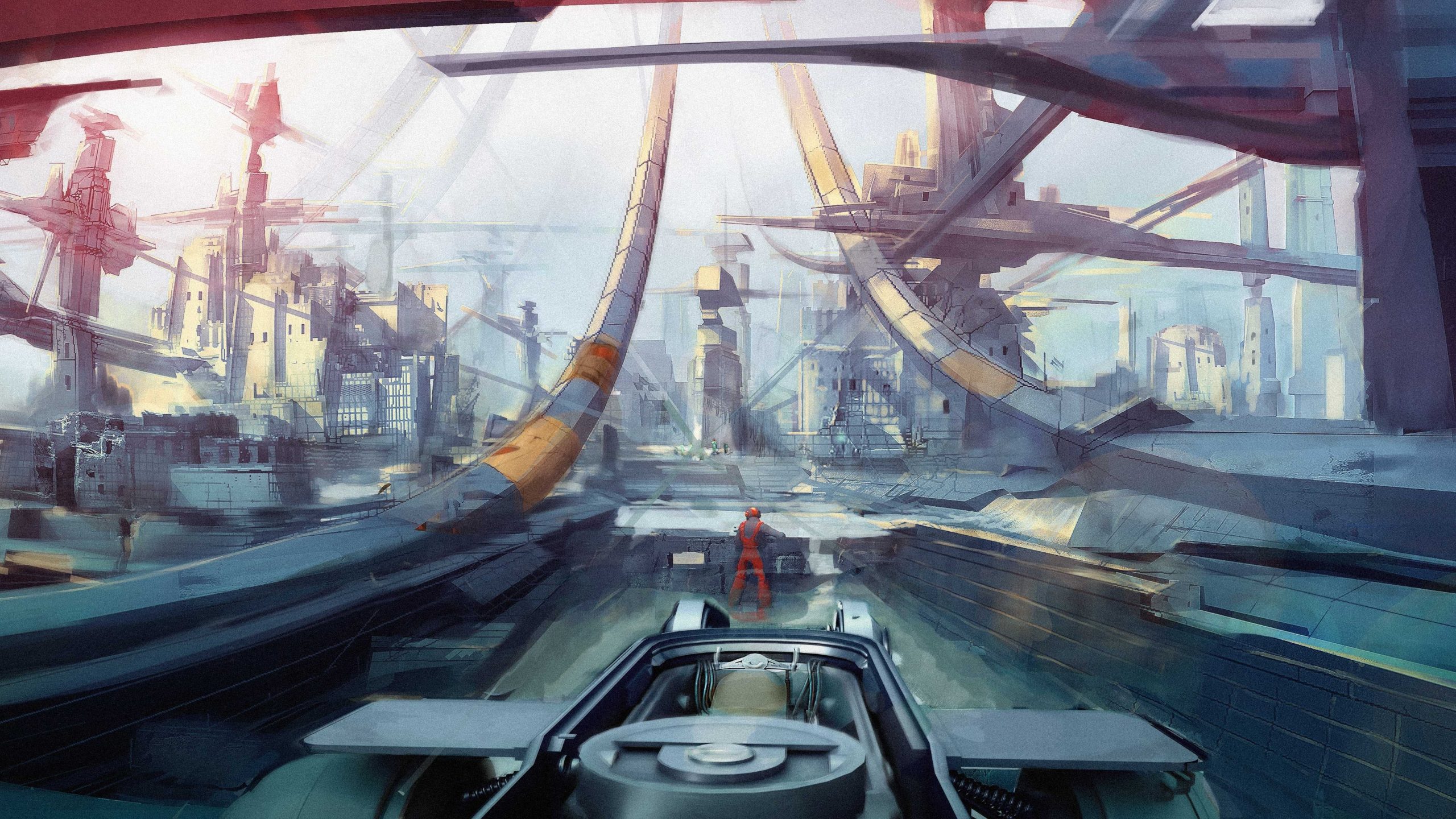Viktor Antonov hasn’t built a world like this before.
The games you know him for are bounded and largely linear. Every tiny detail has been touched by a human hand in Half-Life 2’s City 17 or Dishonored’s Dunwall, striking virtual places which Antonov has helped colour with particular social histories and inscribed with visual techniques that quietly guide the player to the next checkpoint. That’s also true of other games that he’s been involved with over the past few years, such as Wolfenstein: The New Order, Prey and Doom, on which Antonov acted as visual design director.
But Project C, as the game is currently codenamed, is very different. “It’s one of the most ambitious projects I’ve worked on and, I have to admit, a fairly difficult one for me,” he says.
That’s because Project C is set in an entirely open world that operates at the scale of a planet. “The trick for me is, OK, how do I bring my craft from building cities and worlds and chunks of civilisations into a planet? This is the interesting problem I have to solve, to switch from architecture to a natural environment.”
Antonov is speaking to me from the Paris studio of developer Darewise. He sits beside large circular windows through which police sirens wail, and behind him is a wall of Kallax shelves loaded with ephemera from Watch Dogs, Assassin’s Creed and Ghost Recon, series on which founders Benjamin Charbit and Vincent Marty worked when they were execs at Ubisoft.
Antonov loves Paris. It’s the city he and his father first lived in when they escaped from communist Bulgaria, though a few months later he moved to Switzerland and then to Los Angeles to study automotive design. It wasn’t until the early ’00s that he got to return; by then he’d been working on Half-Life 2 for several years and he thought it was nearly done. But it wasn’t, and he ended up having to travel between Paris and Valve’s studio in Seattle until it shipped.
The subsequent decade drew him away from the city again, working at Arkane Studios in Lyon and then across several Zenimax studios, so he’s happy joining Darewise a couple of years ago has given him the chance to settle again, even if Project C isn’t allowing him to imagine and build the kinds of history-layered sci-fi-inflected cities he’s used to.
